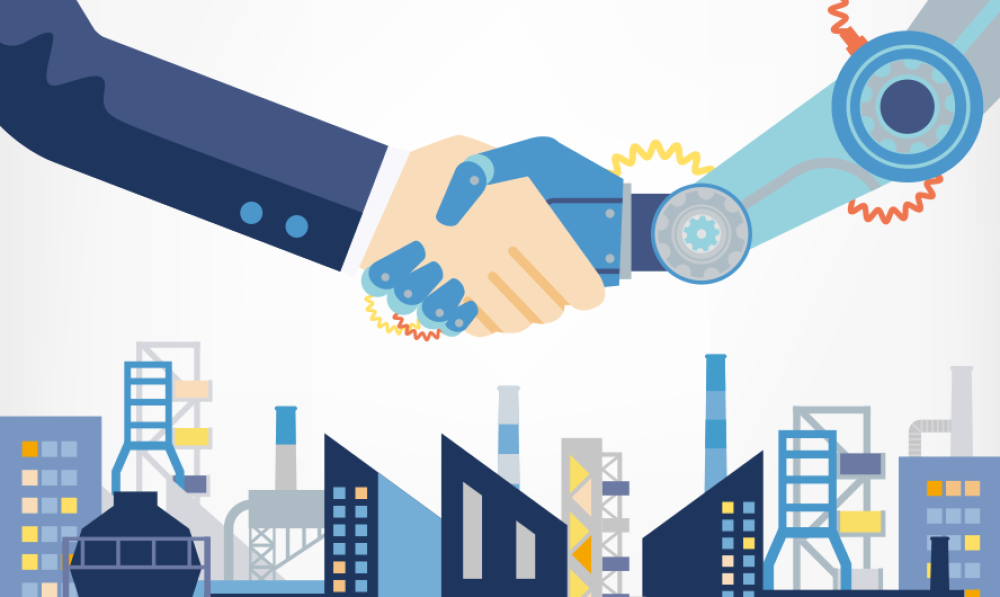The human touch
31 Jan 2017

Everywhere you look marketers huddle together, casting furtive glances to and fro, cupping hands over mouths to shield whispering lips.
Because let’s face it, the AI elephant is not just in the room, it’s sat on the boardroom table and has eaten all of the biscuits.
And in customer engagement in particular, our new robotic overlords dominate conversation and are set to dictate terms.
But why? Is there still a decisive role for the humble human in engagement work?
The struggle is real
Much as a Google search on headaches or sore arms confronts us with pages and pages of death sentences, so it is the lot of the marketer to fumble around with AI and automation keywording and uncover some pretty grisly reading.
A recent report tells us that, by 2020, 85% of enterprise relationships will be managed by customers – without other human interaction.
Yikes.
And when we consider the insight that 89% of companies intend to compete on customer experience from, well, now, that throws up a whole bunch of tricky questions for marketers.
Indeed, these days it seems that Gartner is the go-to for marketers looking for confirmation that their death isn’t greatly exaggerated.
Well, bad news.
It isn’t.
Thing is, there’s these pesky humans…
And yet and yet and yet… like people pushing to get on to a crowded train carriage before the other passengers have disembarked, we’re in the way.
Hooray for humans!
Because for the robots to truly bring their value, they still need us. Or so it seems.
Interrogating the hype and hope of artificial intelligence, tech entrepreneur Om Malik cautions us against endowing computers with too much of a sense of mystery. He cites former IBM-er Michelle Zhou’s belief that there are three stages of AI: recognition intelligence, cognitive intelligence and the final, dystopian(ish) stage where virtual human beings arrive on the scene.
And we’re only really, truly, in stage one. Even stage two, the much vaunted cognitive phase, is a distant frontier reached so far by only a thimbleful of pioneers.
So what does this mean for engagement? Well, it means marketers with their quaint human ways are crucial.
The past is not a foreign country
Yasuyki Katagi is the CEO of McCann Erickson in Japan. He believes that our mates the machines will free our creative souls and help us realise our potential, connecting to the consumers we crave. He tells us “Creatives can focus on the now”.
Because robots are ideally placed to clobber through mountains of data. They can understand buyer behaviour for us. AI can build the frameworks we need to find golden nuggets in the social media mine. Think about AI’s capacity to uncover customer sentiments, to help us build deeper customer profiles. I mean come on, there’s even a tagline generator out there to help propel you into your consumers’ consciousness.
Basically, the leg work of engagement. According to Katagi (et al), robots can learn for us and we can do the fun stuff.
Er… no.
This belief that we as humans, never mind marketers, will no longer need to learn from past experience is short-sighted and plain wrong. Guess what? History tells us that.
And in engagement, in creating personal connections, in dancing with nuance, in delighting in empathy, we are still the lead actors, and will be for many years to come.
At our recent future of customer engagement event, OgilvyOne’s Jo Coombs encouraged us to remember our humanity. Emotion matters. We must think about how we deliver true value to our consumers. AI must compliment and not take over how we communicate, or seek to communicate, with other people.
It must all happen gradually, this age of the machines, so we don’t lose sight of ourselves, and they do say good things come to those who wait.
Please login to comment.
Comments